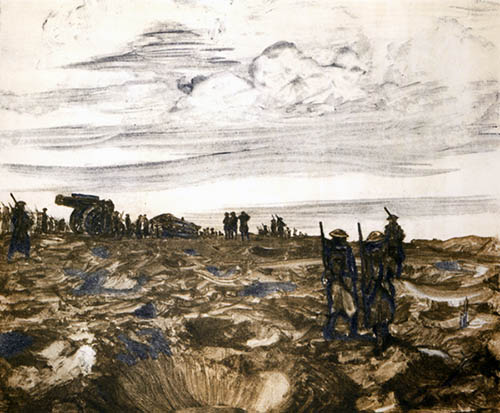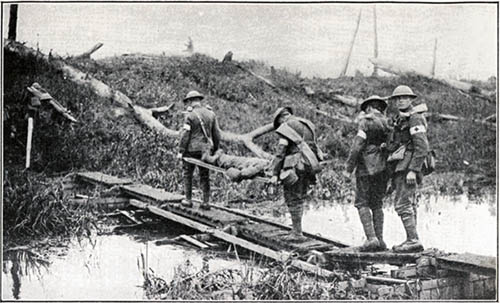The Purpose of War
by Rob Zaretsky
Today, hostorian Rob Zaretsky goes to war. The University of Houston presents this series about the machines that make our civilization run, and the people whose ingenuity created them.
In August 1916, the battle of Verdun ended when its mastermind, German general Eric von Falkenhayn, was cashiered. By the time the French forces retook the land they had earlier lost, the casualties were as incomprehensible as was the landscape now unrecognizable. In the pockmarked morass of mud and human waste, a quarter of a million died on the two sides, while another half million were wounded.
All of this happened in less than a year on a patch of land half the size of Galveston Island. Why? Well, in part for historical reasons. The French were still haunted by the memory of Sedan and Metz, where their Imperial Armies surrendered to the besieging Prussians. And in part for strategic reasons: in 1914, Verdun lived up to its fearsome reputation by breaking in two the initial German advance on Paris, making possible the miraculous holding of the line at the Marne River.
But Falkenhayn introduced a more sinister strategy. In a memorandum, he declared that Germany must bleed France white. The goal was not to take Verdun -- on the contrary. It was, quite simply, to take as many lives as possible. French lives, of course, though Falkenhayn was indifferent to German lives. While he dubbed his plan "Operation Gericht" -- which means "place of execution" as well as "judgment" -- the executioners were as expendable as the victims.
With his bureaucratic deliberation and dehumanizing language, Falkenhayn created the template for the century's subsequent horrors: the Gulag, Auschwitz, Cambodia, Rwanda, Bosnia ... He did this by turning Verdun from a strategic into a symbolic site -- a better defensive line, after all, lay to the west of the fort. But the French accepted the new meaning now thrust upon Verdun. This is clear in the welcoming address given by French officers to newly arrived soldiers at the fort: "You have a mission of sacrifice ... On the day [the Germans] want to, they will massacre you to the last man, and it is your duty to fall."
This felling of an entire generation staggers the mind and beggars statistics. In the end, the true enemy was neither French nor German: it was war itself. At the end of 1916, a newspaper depicted the Roman god of war, Mars, looming over the moon-like landscape and gloating, "The end of a perfect year."
Once a sleepy and obscure village, Verdun became a universal symbol of despair and (oddly) hope. World War One was the second of three wars within seventy years between France and Germany. Like characters from Dante's Hell, they seemed forever chained to one another as they beat out each other's brains. But what seemed impossible has since come to pass: young Germans and French stand together at Verdun, in front of the mountain of bones piled in the ossuary, shaking their heads over the madness that engulfed their ancestors.
I'm Rob Zaretsky, at the University of Houston, where we're interested in the way inventive minds work.
Robert Zaretsky is professor of French history in the University of Houston Honors College, and the Department of Modern and Classical Languages. (He is the author of Nîmes at War: Religion, Politics and Public Opinion in the Department of the Gard, 1938-1944. (Penn State 1995), Cock and Bull Stories: Folco de Baroncelli and the Invention of the Camargue. (Nebraska 2004), co-editor of France at War: Vichy and the Historians. (Berg 2001), translator of Tzevtan Todorov's Voices From the Gulag. (Penn State 2000) and Frail Happiness: An Essay on Rousseau. (Penn State 2001). With John Scott, he is co-author of So Great a Noise: Jean-Jacques Rousseau, David Hume and the Limits of Human Understanding, to be published by Yale University Press in 2007.
A. Horne, The Price of Glory: Verdun 1916. (New York: Penguin, 1964).
A. Prost, "Verdun," in Pierre Nora, ed., Les Lieux de mémoire. (Paris: Gallimard, 1984), v.2, 1755-1780.

Orville Houghton Peets' painting, "The Churned-up Earth," Century Magazine, Vol. LXXV, Nov. 1918, pg. 62.

Carrying the wounded away, Century Magazine, Vol. LXXIV, May 1918, pg. 95.